Non-harmonic tones – don’t fit in chord structures

To analyze, circle and identify embellishment. Embellishing tones are classified by their approach, resolution, and melodic direction.
They can also be described by their metric placement as accented or unaccented.
Passing Tone (PT)
| Approach: | Step |
| Resolution: | Step |
| Direction: | Same |
Neighbor Tone (NT)
| Approach: | Step |
| Resolution: | Step |
| Direction: | Opposite |
Double Neighbor (DN)/Changing Tones (CT)
| Approach: | Step |
| Resolution: | Step |
| Direction: | Combination of upper and lower NT |
Appogiatura (APP)
| Approach: | Leap |
| Resolution: | Step |
| Direction: | Opposite |
In an appogiatura, the dissonance must be metrically accented. If the dissonance is not accented, it is classified as an incomplete neighbor (IN).
Escape Tone (ET)
| Approach: | Step |
| Resolution: | Leap |
| Direction: | Opposite |
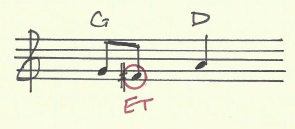
Dissonances created by ET are usually unaccented.
Anticipation
| Approach: | Step |
| Resolution: | Same tone (repetition) |
| Direction: | either |
In an anticipation, a tone “anticipates” the upcoming chord change by moving early, creating dissonance.
Suspension (SUS)/Retardation (RET)
| Approach: | Same tone (repetition) |
| Resolution: | Step |
| Direction: | Up=retardation; down=suspension |
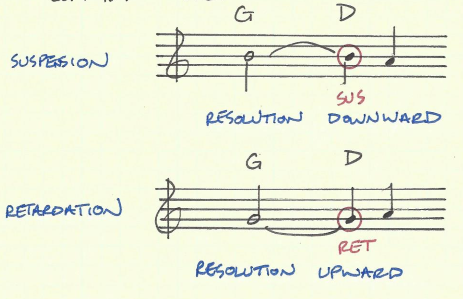

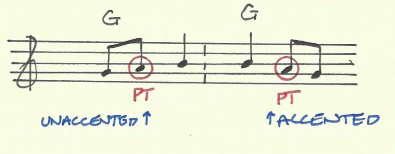
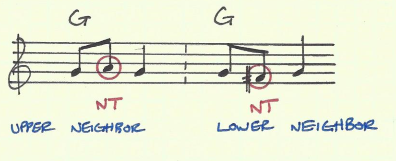
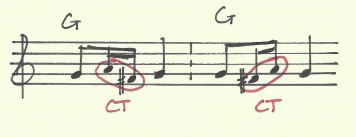
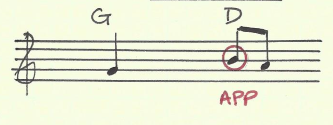
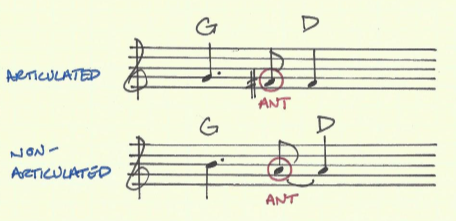
Leave a Reply